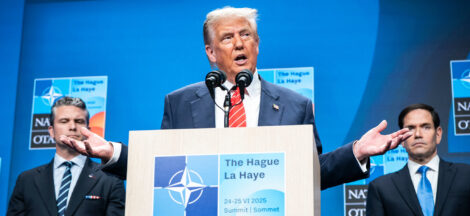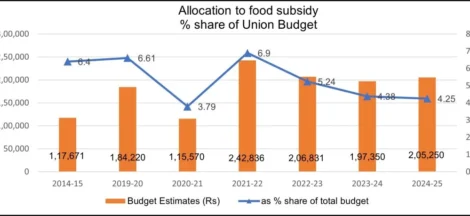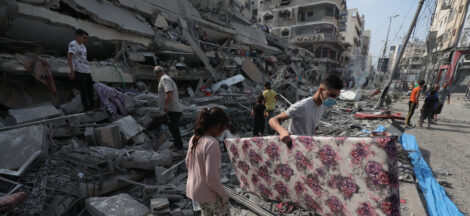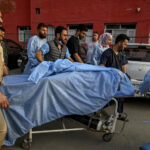By Pablo Castaño
ROME: There may come a time when we look back on the last decade as an anomaly in the modern history of the Catholic Church. Pope Francis — the figurehead of these years, and a radical by the standards of the Catholic hierarchy — is gone, and we are now likely to see a major shift in the political orientation of the Holy See. Ultimately, and ominously, the death of Francis could well mean that the papacy ends up finding itself aligned with the global far right.
It didn’t have to be this way. Elected in 2013, Jorge Mario Bergoglio, the first Latin American pope in history, brought to the Vatican a concern for social justice rooted in the radical liberation theology of his home region — along with an unprecedented focus on environmental issues and migrants’ rights. This was a dramatic shift in priorities after the conservative pontificates of John Paul II and Benedict XVI, both of whom were more concerned with upholding traditional morality than with reviving basic Christian values of equality and fraternity.
In contrast, Francis dedicated two of his encyclicals — the highest-ranking papal declarations — to explicitly political issues. Laudatosi (2015) addressed the environmental crisis, while Fratellitutti (2020) focused on social justice. The latter famously asserted “the right of every individual to find a place that meets their basic needs” — a sign of Francis’s unwavering support for migrants against the backdrop of rising anti-immigrant sentiment in Europe and the United States. Francis was fairly open in his public disregard for far-right populist leaders like Donald Trump and his fellow Argentinian Javier Milei (Milei responded by calling Francis a “filthy leftist”).
Bergoglio’s papacy also saw a shift in the Church’s attitudes to gender and sexuality, though not nearly to the extent initially expected. His stance on sexuality was considerably more liberal than those of his predecessors — as demonstrated when he responded “Who am I to judge?” when asked about homosexuality in the Church. Francis also angered ultraconservatives when he opened the door to priests blessing “couples in irregular situations” (including same-sex couples) and surprised many by appointing women to key positions in the Vatican government. On the other hand, he upheld Catholic orthodoxy in opposing abortion rights, even in cases of rape. Shockingly, Bergoglio went so far as to call doctors who perform abortions “hitmen.”
When it came to institutional matters, Francis’s record was similarly mixed. From the outset, he aimed to bring order to a Vatican bureaucracy tarnished by the corruption scandals exposed in the “Vatileaks” revelations. He implemented a deep-dive reform of Vatican finances, resulting in the closure of 5,000 suspicious bank accounts, the creation of oversight bodies, and anti–money laundering regulations. However, another leak of compromising documents (“Vatileaks 2”) occurred under his tenure in 2015, and the release of the Panama Papers in 2016 revealed widespread Church investment in tax havens. Decades of Vatican venality would not be overturned overnight.
Yet more serious were the thousands of cases of child sexual abuse committed by priests worldwide, many of which had been deliberately covered up by John Paul II and Benedict XVI. Francis sought to end impunity for the offenders with strong measures, as demonstrated by the dismissal of US cardinal Theodore McCarrick, who was found guilty in 2019 of committing and covering up sexual assaults. Also in 2019, the Vatican held a summit on pedophilia, which established new protocols for reporting abuse. However, a mere five years later, the first report from the Commission for the Protection of Minors revealed serious deficiencies in handling complaints. Such reforms now face an uncertain future under Francis’s successor.
Away from the murky backroom dramas of the Vatican, Francis’s ascension to the papacy also marked a break with the geopolitical orientation of his predecessors, as he aligned the Holy See much more closely with the Global South. While John Paul II had been a staunch ally of Washington in the so-called fight against communism, Francis made sure to distance himself from Western governments on issues such as relations with China, Ukraine, and Palestine.
In 2018, the Holy See signed a controversial agreement with the Chinese government that led to a fierce rebuke from the first Trump administration. Later, when Russia invaded Ukraine, he called the Ukrainian president while also visiting the Russian embassy to discuss his concerns about the conflict — a gesture interpreted in the West as being overly sympathetic to Vladimir Putin. Finally, the pontiff labeled Israel’s massacres of civilians in Gaza “terrorism,” in stark contrast to the silence (or complicity) of most Western governments on the subject.
What happens next, in the wake of Francis’s death, is an open question. The conclave that elects the next pope combines religious pomp with political intrigue (a hallmark of Vatican history). When a pope dies, a sedevacante is declared, triggering the conclave process — a meeting of all vote-eligible cardinals worldwide under eighty years old, which takes place fifteen to twenty days after a pope’s death.
It is a secretive meeting in which cardinals are isolated from the outside world: they have no access to the internet and leave the Sistine Chapel only to eat and sleep at the Casa Santa Marta. The conclave lasts until one cardinal obtains two-thirds of the vote — usually requiring multiple rounds — at which point the famous fumatablanca signals the election of a new pontiff. Recent papal successions have been resolved within two or three days (two votes take place every day).
Between the pope’s death and the start of the conclave are the General Congregations, in which all cardinals discuss the Church’s state of affairs. Most of the political manoeuvring to predetermine the voting outcome happens here. This meeting was key to Bergoglio’s election. As Gerard O’Connell recounts in his book on the 2013 conclave, The Election of Pope Francis, the then Archbishop of Buenos Aires gained popularity among prelates for his strong stance on financial transparency — a sensitive issue following the Vatileaks revelations.
It is difficult to predict the outcome of the forthcoming conclave. However, there are strong reasons to believe that Francis’s successor will be a more conservative pope. First, his pontificate has been highly transformative, both institutionally and in its public messaging, making it unlikely that the cardinals will choose another candidate equally inclined toward reform. The Church tends to resist radical and sustained change.
Perhaps more importantly, although the Sistine Chapel has thick walls, the Vatican is invariably influenced by global political trends. With Trump in the White House, and with the far right on the rise worldwide, electing another pope as progressive as Francis would be swimming against the tide — and the Vatican has a long history of adapting to changing realities rather than confronting them. That is why the next fumatablanca will likely announce a more conservative figure than Jorge Bergoglio. Indeed, the mood of the moment suggests that he may well be a stark antithesis to the “leftist” pope. (IPA Service)
Courtesy: Jacobin




 28 Dead in Kashmir’s Deadliest Civilian Attack in Years
28 Dead in Kashmir’s Deadliest Civilian Attack in Years 